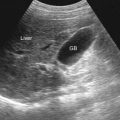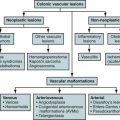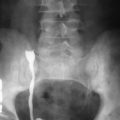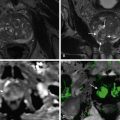Etiology
Hepatic iron overload is a generic term that refers to the nonphysiologic accumulation of iron within the hepatic parenchyma. The most clinically significant cause of hepatic iron overload is hereditary hemochromatosis. Hereditary hemochromatosis is associated with several mutations in genes regulating iron metabolism, the most common of which are in the HFE gene. The HFE mutations result in dysregulated iron absorption, which may lead to total-body iron overload and accumulation of excess iron in tissue (hemosiderosis), including the liver, heart, and various endocrine organs. The iron accumulation causes tissue damage and, if untreated, may lead to cirrhosis and hepatocellular carcinoma, along with assorted cardiac and endocrine disturbances.
Secondary (acquired) causes of hepatic iron overload include the iron-loading anemias (thalassemia major, sideroblastic anemia, chronic hemolytic anemia, and spur cell anemia), long-term hemodialysis, and dietary iron overload. These usually do not lead to significant liver dysfunction, although they may cause dysfunction in other organs such as the heart. Chronic liver diseases (hepatitis B and C virus infection, alcohol-induced liver disease, nonalcoholic fatty liver disease, and porphyria cutanea tarda) also may be associated with hepatic iron overload, but the clinical picture is dominated by the primary hepatic abnormality and the excess liver iron is of secondary importance.
The average adult stores 1 to 3 g of iron, mainly within the liver and in red blood cells as hemoglobin. In normal persons, approximately 10% of dietary iron (1 mg/day) is absorbed daily. A similar amount of iron is lost via sloughing of cells from the skin and mucosal surfaces. In premenopausal women, menstruation increases the amount of iron loss to approximately 2 mg/day. Ultimately, however, the body lacks a proficient iron excretion mechanism and pathologic excesses in iron overload are therefore unchecked and progressive. Systemic iron levels are kept within a narrow homeostatic range because of a complex regulatory mechanism monitoring the absorption of iron via the gastrointestinal tract and its accumulation in the body.
Iron overload in hereditary hemochromatosis occurs when iron absorption via the digestive tract exceeds iron usage and excretion. The most common cause of hereditary hemochromatosis is a mutation in the HFE gene located on chromosome 6 that regulates iron homeostasis. It also can result from genetic anomalies corresponding to other genes involved in iron metabolism.
Regardless of the underlying genetic abnormality, when iron absorption exceeds the transport capacity of transferrin, excess iron is deposited within parenchymal cells of various tissues, including the liver, heart, and endocrine organs. Hemosiderosis is to this excess parenchymal iron and may cause tissue damage by catalyzing the production of radical oxygen species from hydrogen peroxide. These radical oxygen species attack cell membranes, cellular proteins, and DNA. The pathophysiologic sequelae depend on the organs and tissues involved.
Hepatic dysfunction from secondary hemosiderosis with these entities is rare, although clinically significant iron deposition in other organs (e.g., the heart) may occur. Chronic liver diseases (hepatitis B and C virus infection, alcohol-induced liver disease, nonalcoholic fatty liver disease, and porphyria cutanea tarda) are sometimes associated with hepatic iron overload; this has been attributed to diminished functional hepatocyte mass and reduced hepcidin production. In these diseases, the primary liver condition is the paramount abnormality and the secondary iron overload is of relatively minor clinical relevance.
Prevalence and Epidemiology
Hereditary hemochromatosis is the most common genetic disease in populations of Northern European ancestry. Homozygosity of the C282Y mutation has a prevalence of 1 per 200 persons (0.5%), 10 times higher than that of cystic fibrosis. In the United States, approximately 1 million people carry the diagnosis of hereditary hemochromatosis. It is estimated that an additional 1.5 million have undiagnosed hereditary hemochromatosis and approximately 5% of individuals with hereditary hemochromatosis have cirrhosis.
The development of hereditary hemochromatosis is impacted by ethnicity, race, sex, and age. Hereditary hemochromatosis is typically a disease of Northern European ancestry, with persons of Irish descent at greatest risk. In the United States, C282Y heterozygosity was demonstrated in 9.5% of non-Hispanic whites, 2.3% of blacks, and 2.8% of Hispanics. Because of the countereffects of menstruation on iron accumulation, females are three times less likely to develop hereditary hemochromatosis than males and are two to three times less likely to progress to serious complications (e.g., cirrhosis, diabetes, heart failure). Hereditary hemochromatosis typically manifests in patients older than 40 years of age, and it appears later in women than men.
Prevalence and Epidemiology
Hereditary hemochromatosis is the most common genetic disease in populations of Northern European ancestry. Homozygosity of the C282Y mutation has a prevalence of 1 per 200 persons (0.5%), 10 times higher than that of cystic fibrosis. In the United States, approximately 1 million people carry the diagnosis of hereditary hemochromatosis. It is estimated that an additional 1.5 million have undiagnosed hereditary hemochromatosis and approximately 5% of individuals with hereditary hemochromatosis have cirrhosis.
The development of hereditary hemochromatosis is impacted by ethnicity, race, sex, and age. Hereditary hemochromatosis is typically a disease of Northern European ancestry, with persons of Irish descent at greatest risk. In the United States, C282Y heterozygosity was demonstrated in 9.5% of non-Hispanic whites, 2.3% of blacks, and 2.8% of Hispanics. Because of the countereffects of menstruation on iron accumulation, females are three times less likely to develop hereditary hemochromatosis than males and are two to three times less likely to progress to serious complications (e.g., cirrhosis, diabetes, heart failure). Hereditary hemochromatosis typically manifests in patients older than 40 years of age, and it appears later in women than men.
Clinical Presentation
The clinical manifestations of hereditary hemochromatosis range from isolated biochemical abnormalities to multisystem disease involving the liver, heart, endocrine organs (e.g., pancreas and pituitary gland), joints, and skin. Most patients are asymptomatic at the time of diagnosis, which is discovered as a result of screening serum iron studies in individuals with elevated liver function tests or testing of family members of an affected proband. In early disease, symptoms are nonspecific and include weakness, lethargy, and fatigue. Symptoms related to iron deposition within specific organs occur later. Involvement of the liver may be associated with hepatomegaly and right upper quadrant abdominal pain. If the disease progresses to cirrhosis, patients may develop portal hypertension or hepatocellular carcinoma. Other manifestations of hereditary hemochromatosis include arthropathy secondary to iron deposition in the joints (classically involving the second and third metacarpophalangeal joints and proximal interphalangeal joints); diabetes mellitus resulting from pancreatic iron deposition; loss of libido, impotence, and amenorrhea as a result of pituitary involvement; and dilated cardiomyopathy, congestive heart failure, conduction abnormalities, and arrhythmias because of iron deposition in the heart. The characteristic darkening of the skin, termed bronze diabetes, is caused by increased levels of melanin and is an infrequent manifestation in late disease.
Patients with hepatic involvement demonstrate mild, nonspecific elevations in serum levels of aminotransferases (<200 mg/dL) and bilirubin (<4 mg/dL). When hereditary hemochromatosis is suspected, however, serum iron studies hone the diagnosis. In mild disease, the excess iron is mainly in the plasma compartment and is shown by elevated serum iron levels and transferrin saturation and diminished transferrin. In advanced disease, iron is stored within parenchymal cells, shown by an elevated serum ferritin level. If serum ferritin and aspartate aminotransferase (AST) levels both are elevated and platelet counts are low, patients are at high risk for having or developing cirrhosis. The diagnosis of hereditary hemochromatosis is confirmed by genetic testing for the C282Y and H63D mutations. Imaging does not play a diagnostic role in hereditary hemochromatosis, although certain imaging findings may support the diagnosis.
Liver biopsy, for the purpose of determining hepatic iron content and fibrosis staging, is reserved for patients who are homozygous for C282Y mutations, are older than 40 years of age, and have high ferritin levels (>1000 mg/L) and elevated serum AST levels. In individuals with results of serum iron studies that are of concern and who are not homozygous for the C282Y mutation, consideration should be given to other causes of liver disease. A liver biopsy in these patients may uncover other causes and determine hepatic iron content, which could guide the decision as to whether to pursue therapeutic phlebotomy.
The natural history of hereditary hemochromatosis varies according to type, and disease progression is accelerated with excess alcohol consumption, obesity, and viral hepatitis. Primary liver cancer is an important complication of advanced hereditary hemochromatosis and is almost exclusively observed in patients with underlying cirrhosis. Importantly, the risk for malignancy persists after therapeutic phlebotomy, so appropriate screening should continue after this intervention. Large population-based studies analyzing the risk for malignancy are lacking, but it is clear that hepatocellular carcinoma is the most common primary liver malignancy in patients with hereditary hemochromatosis, followed by combined hepatocellular carcinoma and cholangiocarcinoma and cholangiocarcinoma alone.
Pathology
Iron deposition within the liver varies in distribution according to the cause. Generally, the iron distribution in hereditary hemochromatosis is predominantly within hepatocytes, whereas in most cases of secondary iron overload the iron is situated mainly within the reticuloendothelial system (e.g., Kupffer cells). However, in advanced stages of either of these groups of diseases, stainable iron may be found in both cell types. In microscopic sections, iron is demonstrated via a Perls stain (using acid ferrocyanide), which produces a Prussian blue reaction with ferritin and hemosiderin.
In hereditary hemochromatosis, stainable iron first appears as golden-yellow hemosiderin granules in the cytoplasm of periportal hepatocytes. With disease advancement, the iron deposition progresses in a portal to centrilobular fashion, eventually involving the entire lobule diffusely. When well-developed, there is a distinctive pericanalicular “chicken wire” distribution to the stainable iron, a result of accumulation of iron within subapical hepatocyte lysosomes. Although the majority of iron is found within hepatocytes, Kupffer cells and biliary epithelium may contain iron later in the disease course.
Because iron is a direct hepatotoxin, inflammation is characteristically absent; therefore, the identification of significant inflammation should prompt consideration of coexistent causes of chronic liver disease. As iron accumulates, fibrosis slowly develops in a periportal distribution. Eventually, portal-portal bridging fibrosis and cirrhosis ensue, resulting in a diffuse micronodular pattern. With phlebotomy, there is steady disappearance of stainable iron in a pattern that is the reverse of its accumulation, from centrilobular areas to portal tracts. Although iron deposition is typically diffuse in cirrhosis secondary to hereditary hemochromatosis, small regions spared by iron deposition have been theorized to represent preneoplastic lesions.
Imaging
As stated earlier, imaging does not play a role in the diagnosis of hereditary hemochromatosis. Nevertheless, imaging modalities may be used to monitor patients with established hereditary hemochromatosis, and patients with the disorder may undergo imaging studies for unrelated reasons. Patients with advanced disease may progress to cirrhosis ( Figure 39-1 ), portal hypertension, and hepatocellular carcinoma; findings relevant to these complications are discussed in other chapters. In recent years, interest has grown in developing noninvasive methods to quantify hepatic iron, and a brief description is given of some of the proposed techniques.
Radiography
Radiographs play no role in the routine assessment of the liver in hereditary hemochromatosis but may be used to identify the characteristic arthropathy associated with the disorder. Findings in the hands of patients with hereditary hemochromatosis may include squared-off bone ends and hooklike osteophytes, joint space narrowing, sclerosis, and cyst formation.
Computed Tomography
Unenhanced Computed Tomography
The normal liver parenchyma has an attenuation of 45 to 65 Hounsfield units (HU) on unenhanced, standard (single-energy) computed tomography (CT). In hepatic hemosiderosis, secondary to hereditary hemochromatosis or other causes, unenhanced CT reveals elevated hepatic attenuation because of the greater electron density associated with iron atoms compared with normal liver. The characteristic CT finding is a “white liver” with a diffuse increase in liver density above 70 HU. In general, unenhanced CT accurately detects hepatic iron in advanced disease but is unable to do so for early or mild hepatic iron overload. Unenhanced CT has almost 100% sensitivity in detecting hepatic iron overload more than 5-fold above the upper limit of normal but only 60% sensitivity for detection of hepatic iron concentration 2.5-fold above the upper limit of normal. Increased hepatic attenuation is not specific for iron accumulation and also may be seen in storage disorders, sarcoidosis, Wilson’s disease, and drug-induced (amiodarone, methotrexate, and gold) hepatotoxicity.
Contrast-Enhanced Computed Tomography
Contrast-enhanced CT is not relevant for the detection and monitoring of hepatic iron overload but may be performed for surveillance of hepatocellular carcinoma in patients who have progressed to cirrhosis.
Extrahepatic Findings.
Patients with hereditary hemochromatosis may develop iron overload in the pancreas and myocardium. However, these tissues typically have normal attenuation at unenhanced CT. CT has limited sensitivity for detection of extrahepatic manifestations of hereditary hemochromatosis.
Computed Tomography Quantification of Hepatic Iron Overload.
Although iron overload is associated with increased hepatic attenuation, the correlation between CT attenuation and hepatic iron concentration is poor. Conventional single-energy CT does not permit reliable gradation of hepatic iron overload or accurate quantification of hepatic iron content. However, dual-energy CT may offer the potential to quantitate liver iron content by using an iron-specific three-material decomposition algorithm, which negates the confounding effects of healthy liver attenuation variability and concomitant steatosis. Larger multicenter trials are needed to reproduce and further explore this possibility.
Magnetic Resonance Imaging
Unenhanced Magnetic Resonance Imaging
Because of susceptibility effects, iron accumulation in tissue leads to T2 and T2* shortening, causing signal loss on T2-weighted and T2*-weighted images. Gradient echoes are more sensitive to susceptibility effects than spin echoes, and the signal loss is more pronounced on gradient echo images. Thus, the affected liver appears relatively hypointense on T2*-weighted images and, to a lesser extent, T2-weighted images ( Figures 39-2 and 39-3 ). Mild cases of iron overload may be apparent only on gradient echo imaging. If iron overload is severe, the degree of signal loss may be marked on both types of images. Although iron primarily shortens the T2 and T2* of the liver, it also shortens the T1, and the liver may have increased signal intensity on T1-weighted sequences acquired with very short echo times.









